This is part two of a summary provided by the Norhaven Institute about the key events to the Battle of the Strand.
Please check out part one for information about the lead-up to the battle. It provides a lot of the exposition and the reasons why it occurred with details about those involved.
Table of Contents
Victory Curtailed
King As was the ruler of a small region on the western side of Mount Kusatyu, believed to be somewhere near where present day Akasuu is located. He had spent his entire life fighting the Giants, just as his fathers had done before him. His grandfather claimed to be one of the heroes that had defeated the giant, Odabahi, as told in the Songs of Jira.
As’ forces were at the vanguard of the attack upon Steńŕini. His eldest and second-eldest sons had both died in the hills to the city’s east. His three youngest daughters had been captured, violated and murdered by a goblin murder squad. En, his third son too had been severely injured by the Griffons sent out from the giant’s city. En had only been saved by his manservant, the hunchback, named Kobanongar. Later, Kobanongar had been part of the secret arcane force (some say their leader) that had assaulted Steńŕini, causing it to plummet into the lake.
After the city’s fall and the routing of the Giant’s armies, King As and his troops rested, as others sought for bounty and cleaned up any stragglers that had survived. Their plan was to move deeper into the Giant Empire until they were absolutely sure the Giants could never challenge them again.
Somehow none of the human armies ever managed to penetrate into the gubernatorial basement ruins. Perhaps if they had, much desolation might have been avoided. Or perhaps the Giants had used their magic to confuse, or even murder, any that found their way into its tunnels or the great antechamber that contained the Ëĺüklõdülnünyüryerjlek.
The first signs that there was new trouble brewing was when the scouts reported that there were many giants seeking succour. At first King As, and the other leaders, believed that these were survivors from Steńŕini, but it was soon revealed that the bulk of them were from other cities. They were surrendering to the humans in massive numbers, claiming to be fleeing some new terrifying foe.
King As, and the other leaders, did not believe the giants, fearing that this was some new ruse. Giants were well known for the artifices and schemes. This proved to be unfortunate, for when the first wave of the demon horde descended upon them, they were not prepared. They, and most of the fleeing giants were all massacred or consumed by the demons, who feasted upon their souls. Included amongst those who had their souls sucked from their bodies was King As.
The Wisdom of En

Meanwhile many leagues away in a small settlement to the west, En, lay recovering from his wounds. It is said that he sensed the death of his father as well as the cause. En was not only a keen warrior but also a mighty wizard. He roused from the infirmary and immediately set about firming up the settlement’s defences, despite the misgivings of the other residents. And well that he did, for when the demon horde reached them they were prepared, but only just. They managed to beat back the demon vanguard, giving themselves enough time to escape, fleeing westward.
The horde pursued them, all the way past En’s ancestral lands. Some scholars believe that En fled all the way into, what was then named, Westáhal. There he secured what remained of his family, before he sought for a way to stop the demon scourge.
It was many years later before he found a solution. By then En had children of his own, some approaching adulthood. The demon horde still ravaged all that it touched, but it had lost impetus, expanding its boundaries only slowly. However, it was only a matter of time before it accosted En and all of humanity again.
The Blade of En
En, along with advisor Kobanongar, travelled into the lands of the Elfs, in Old Sidharan. They used their magics to pass through the wild, swaying trees, right into the heart of Elfdom itself. And thus it appears in the records of the Elfs themselves (translated, of course):
“My name is En,” he told those who confronted him in the purest Sidharin. “I seek an audience with you and yours under the flag of parley.”
“Why would we wish to hear anything that a beast has to say?” the Warden asked.
“You will not wish to hear what I have to say, whether spoken by beast, bird or tree.”
It was not the sureness with which En spoke, but the manner of the words themselves that cast doubt into the Warden’s mind.
“You speak like one of the wise, but why would the wise have such a simple name?”
“I am En. A simple name for a simple man.”
And so the Warden was convinced to lead En and his party to the leaders. And there En told them of the breaching of the veil, and the horde of demons that threatened everything in its wake.
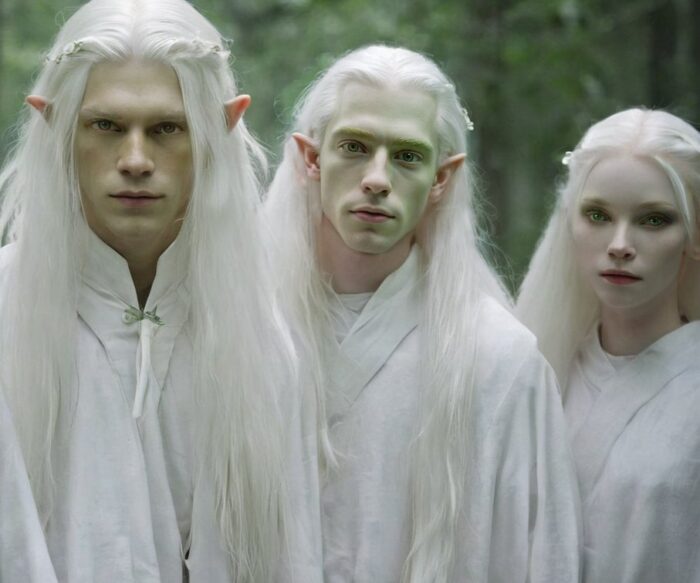
“What would you have us do?” asked the Sídharin leader, “Our fathers and mothers fled the Chaos when our numbers were much greater than they are now.”
For the first time En showed uncertainty. He glanced across to one of his companions, a young man unable to stand fully upright due to a crooked back. “We have a plan,” En said.
The Sídharin leaders did not much like this plan, but they had little choice. They could attempt to flee, and find a new home somewhere in the Chaos, as their kin had long ago. Or perhaps even seek a way back to Faerieland, presuming that was even possible. Or they could assist En. The vote was close, but it was decided that they would fight for this world rather than flee to another.
En crafted a powerful sword from the metal of a fallen star. The sword was rumoured to be forged in dragon fire, and enchanted with many powers by human, elf, and giant mages. He named the sword Demon Slayer, although to most it just became known as The Blade of En.
The Battle of the Strand
Upon the plains, at a place that eventually became known as the City of Glory, the armies of Humans, Elfs, and Giants made their stand against the demons. It was the first time that Humans, Giants, Goblins, Ogres, Trolls, and even Dwarfs fought side by side in battle. It is there that the tide turned.
Slowly, over years they drove the demons back towards the ruins of Steńŕini, but their course did not take them directly there. Instead, they made for the other Giant cities that had opened portals to the Chaos. One by one, they were closed and forever sealed. Only then, did they head towards Steńŕini.
By then, the demons had constructed a mighty fortress around the portal, with a high tower stretching almost as high as the city once flew. The Allied armies knew that a siege was pointless. Demons can not be starved out, especially with the portal still open to the Chaos.
They threw themselves against the defences, dying by their thousands. Gradually, over the course of many weeks, they breached the fortress’ walls and En led the way. His sword made quick work of the demons and they eventually made their way to the antechamber containing the Ëĺüklõdülnünyüryerjlek.
There, a new horror confronted them. For they could see through the portal and into the Chaos itself. The massive figure of a Demon Lord approached.
“If it is allowed to enter our world, all life will be imperilled,” Kobanongar told En. “Nothing can withstand it, maybe not even a dragon, should one even care to leave the safety of its burrow.”
“Then you and I must stop it, my friend,” En told Kobanongar, before addressing the other mages. “And you others must close this portal and ensure it can never be opened again.”
“But you will be trapped inside,” the mages complained.
“No. As long as you remember what we did this day, I will always be here.”
And so it was that En and Kobanongar stepped up to the portal. En turned then and faced all those crammed into the chamber.
“I shall face the Gods as I walk backwards into the Chaos,” he told them. And he did exactly that: walked backwards through the gate.
Those gathered briefly saw En turn and draw his sword, as he grew in size to match that of the Demon Lord. Kobanongar too stretched, his form becoming indistinct. Then the portal was covered with thick materials made by arcane means, and the wizards placed many wards and carved many glyphs of protection upon its surface and around the gate. And at its heart they seated a great seal made from black stone, inlaid with silver. This seal they covered with many runes and cast their greatest magics, hoping to forever close the portal into the Chaos. But as the final words of the spells were spoken, a mass of energy exploded from the gate, and forever breaking the world.
Aftermath
The damage was cataclysmic, and its effects felt around the world. It caused mountains to rise, and others to crumble. The land shuddered, and the seas became turbulent. Lakes boiled, and oceans froze. And many people died including all those between Mount Kusatyu and the mountains in the Far East.
It affected magic too, causing it to become dangerous and unpredictable as well as harder to produce. Old enchantments failed, new effects occurred, seemingly at random. Many more died, around the world as a result.
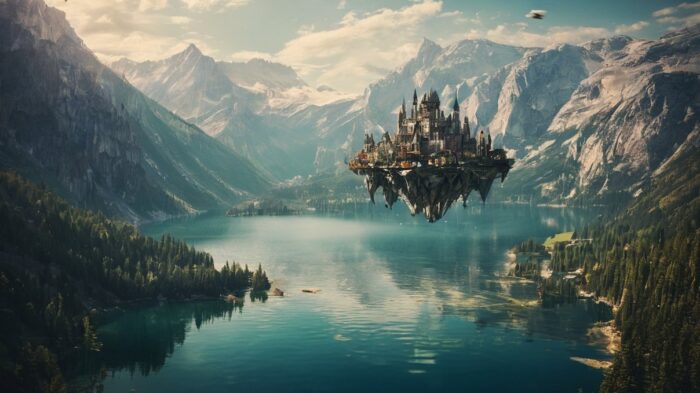
The Giants were almost completely wiped out. Those that survived slunk away, believing they would be blamed for causing this terrible disaster. The Goblins and dwarfs scattered, suddenly freed from the Giant’s yoke. Elfs fled back to Sidharan, but with fewer than half the numbers they had when they started the war. The surviving demons escaped, burying themselves into any hole or crevice they could find, only to emerge from time to time to feed upon the innocent. As for the humans, they began to rebuild.
It was centuries later before anyone gained the courage to return to the site of the battle: The Strand, as it was now called. A churning sea, spanning across the entire continent, had opened up around the island, still with the ruins of Steńŕini upon it. It was longer still before anyone crept into the ruins and laid eyes upon the Ëĺüklõdülnünyüryerjlek.
The gate remained open, but the seals protecting it from being used, held.
For now.










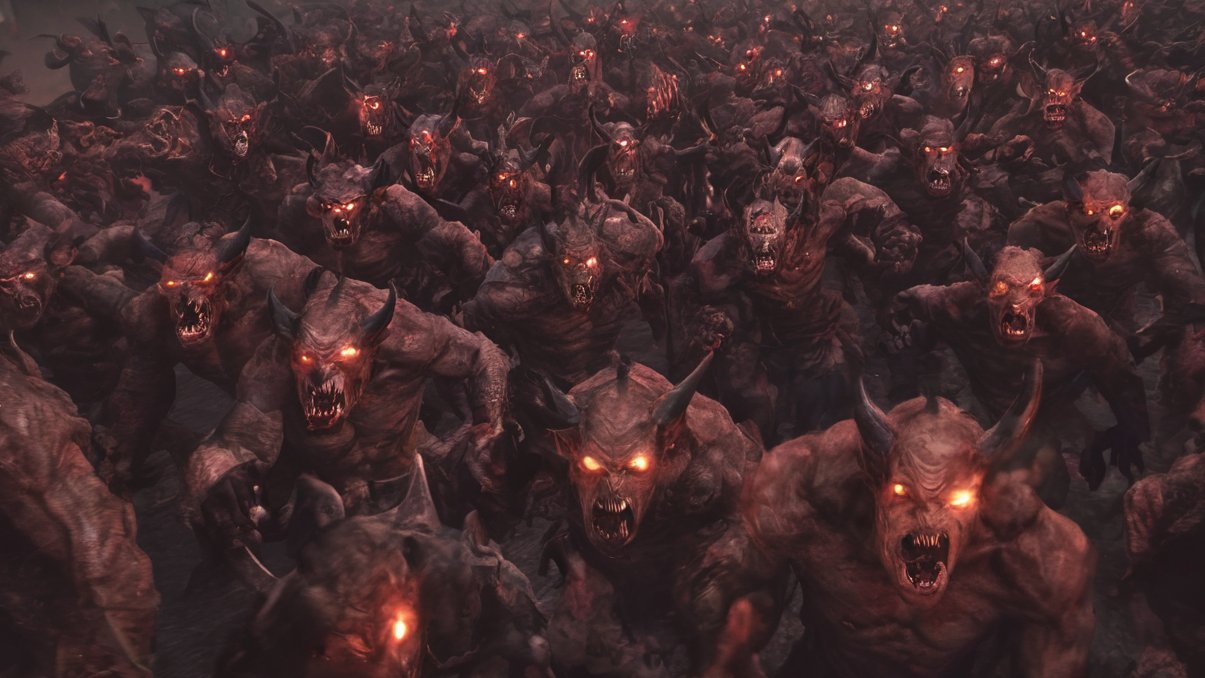
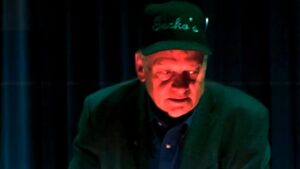
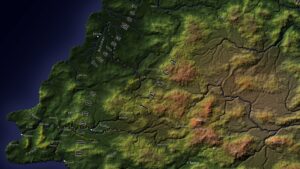

1 comments.
[…] This is part one of a summary provided by the Norhaven Institute about the lead up and background to the Battle of the Strand. Part two is available here. […]